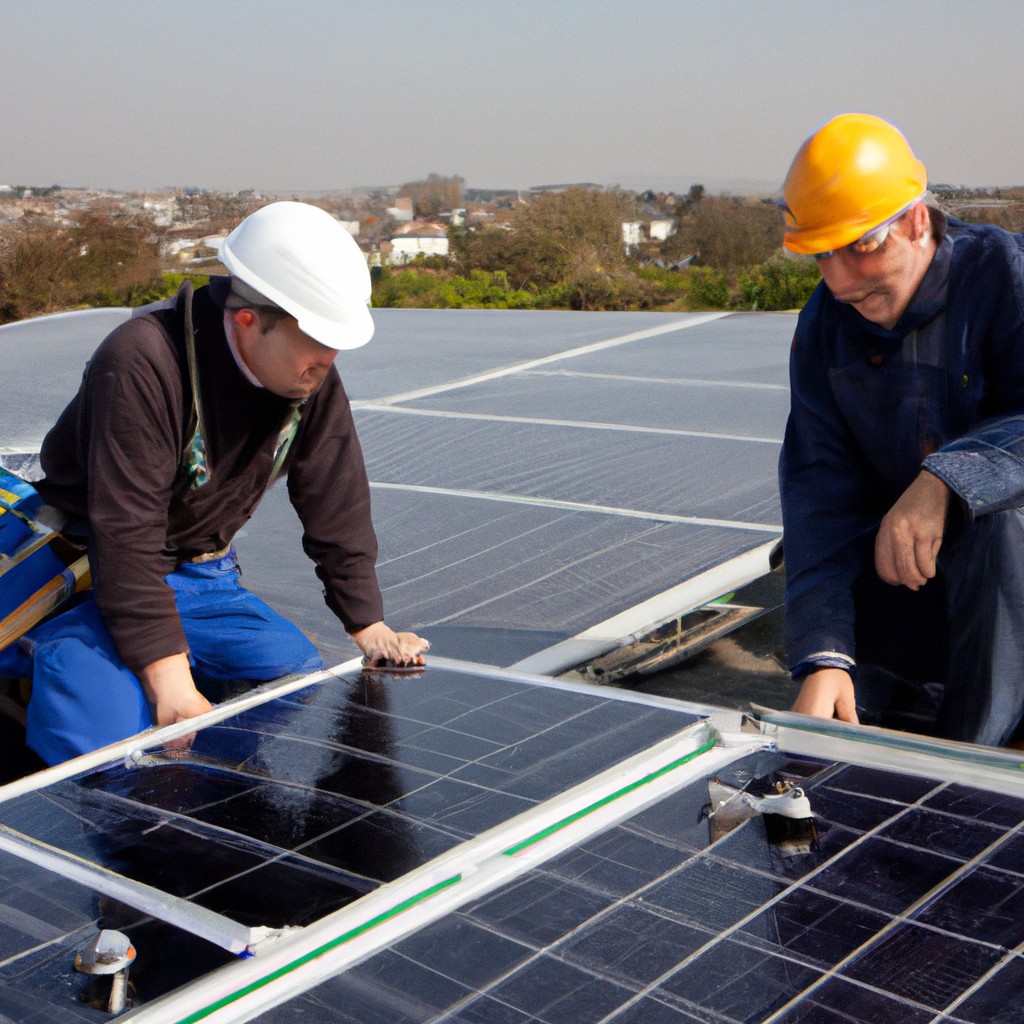In this guide, we’ll outline the key factors to consider when choosing a solar installer for your renewable energy needs.
Key takeaways:
- Solar photovoltaic installers perform site assessments and system planning.
- They handle the physical installation and maintenance of solar systems.
- Installers are skilled in electrical work and provide customer service.
- Education and training options include technical programs and NABCEP certification.
- Median pay is ,470, with a positive job outlook for solar installers.
Duties of Solar Photovoltaic Installers

Solar photovoltaic (PV) installers, often known as solar technicians, perform a crucial role in the installation and maintenance of solar panel systems. Their primary responsibilities include:
1. Site Assessment: They evaluate a location’s solar potential and determine the best solar solution for the client’s needs, considering roof condition, shading, and local weather patterns.
2. System Planning: Installers design the layout of solar systems, ensuring compliance with relevant codes and safety standards.
3. Installation: The physical installation involves mounting solar panels on roofs or other structures, connecting panels to the electrical system, and installing all necessary wiring and equipment.
4. Maintenance and Repair: They conduct regular checks and troubleshooting to ensure systems operate efficiently, and perform necessary repairs or upgrades.
5. Electrical Work: Skilled in electrical systems, they safely handle the high-voltage wiring and connect solar systems to the grid.
6. Customer Service: Installers often guide clients through the system, explaining maintenance and answering questions about operation and energy savings.
7. Compliance: Ensuring all installations are in accordance with local, state, and national regulations is a critical part of their jobs.
The work requires physical dexterity, comfort with heights, and knowledge of power tools and electrical equipment, ensuring optimal functionality and safety of solar installations.
Education and Training Requirements for Solar Photovoltaic Installers
Most solar photovoltaic (PV) installer positions require a high school diploma or equivalent, with on-the-job training provided by employers. However, there are technical training programs and community colleges that offer courses in solar panel installation, system design, and safety around electrical components.
Some individuals choose to enhance their qualifications by completing a course through the North American Board of Certified Energy Practitioners (NABCEP). NABCEP certification is considered the gold standard for PV installation professionals and could potentially lead to higher pay and greater job opportunities.
Apprenticeships are another route, combining classroom instruction with extensive on-the-job training under the guidance of experienced installers. These typically last between 1 to 2 years.
Lastly, understanding the basics of electricity, construction, and safety is crucial, as installers must safely mount panels, connect electrical systems, and troubleshoot issues. Advanced knowledge of local electrical codes and the National Electrical Code (NEC) is also important to ensure installations are compliant and safe.
Median Pay and Job Outlook for Solar Photovoltaic Installers
According to the Bureau of Labor Statistics, the median annual wage for solar photovoltaic installers was approximately $46,470 as of May 2021. However, wages can fluctuate based on factors such as geographic location, level of experience, and employer size.
The job outlook for this profession is highly positive; the increasing demand for renewable energy sources is expected to drive employment growth. Between 2021 and 2031, employment for solar photovoltaic installers is projected to grow by 27%, much faster than the average for all occupations.
Most solar installers receive on-the-job training and can advance their careers with additional certifications or as they gain experience, potentially leading to higher wages. Being a relatively young and fast-evolving industry, solar energy offers new entrants the prospect of rapid advancement and the opportunity to be at the forefront of a growing green economy.
Steps to Becoming a Solar Photovoltaic Installer
To embark on a career as a solar photovoltaic installer, follow these steps:
- Obtain a high school diploma or equivalent. It provides a foundation in mathematics and basic sciences beneficial for this field.
- Consider a post-secondary education, such as a certificate or associate’s degree in solar energy technology, though not mandatory.
- Gain hands-on experience through an apprenticeship or on-the-job training. This practical approach develops skills in electrical systems and solar panel installation.
- Acquire professional certification, such as the North American Board of Certified Energy Practitioners (NABCEP) certification, which may enhance job prospects and credibility.
- Stay updated with continuing education courses to keep abreast of the latest solar technologies and best practices in installation.
These steps provide a pathway to becoming proficient in solar panel installation, an industry known for its growth and potential for innovation.
Benefits of Solar Energy Systems for Urban Environments
Solar energy systems are highly beneficial in urban environments, providing clean, renewable power that contributes to a decrease in air pollution. This is particularly valuable in densely populated areas where the quality of air can significantly affect public health. The adoption of solar power also helps to reduce greenhouse gas emissions, combating climate change.
In addition to environmental advantages, solar installations can lead to energy independence for urban areas. As cities often pay premium prices for electricity due to higher demand, generating power locally with solar panels can reduce the overall cost of energy for both homeowners and businesses.
Moreover, solar energy systems can alleviate the load on the electrical grid during peak times. Urban settings tend to have higher electricity needs during the day, which coincides with peak solar production hours, allowing solar panels to provide electricity when it is most needed.
Urban solar installations can also utilize unused spaces efficiently, with rooftop systems being the most common. These installations not only make use of otherwise idle roof areas but can also provide an additional layer of insulation, improving a building’s energy efficiency.
Furthermore, cities that embrace solar energy can foster job growth in the renewable energy sector, providing new opportunities in industries related to the production, installation, and maintenance of solar panels.




